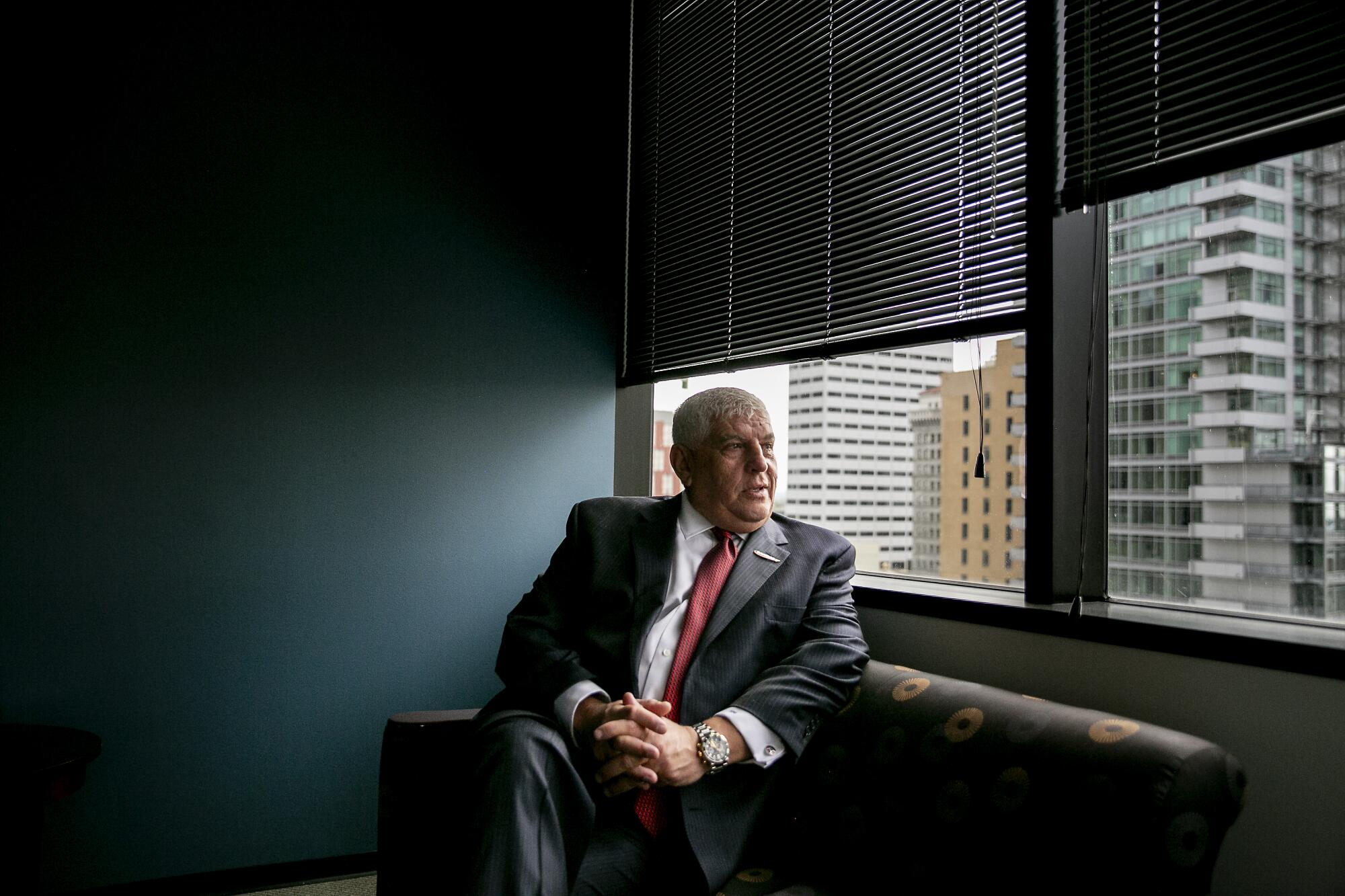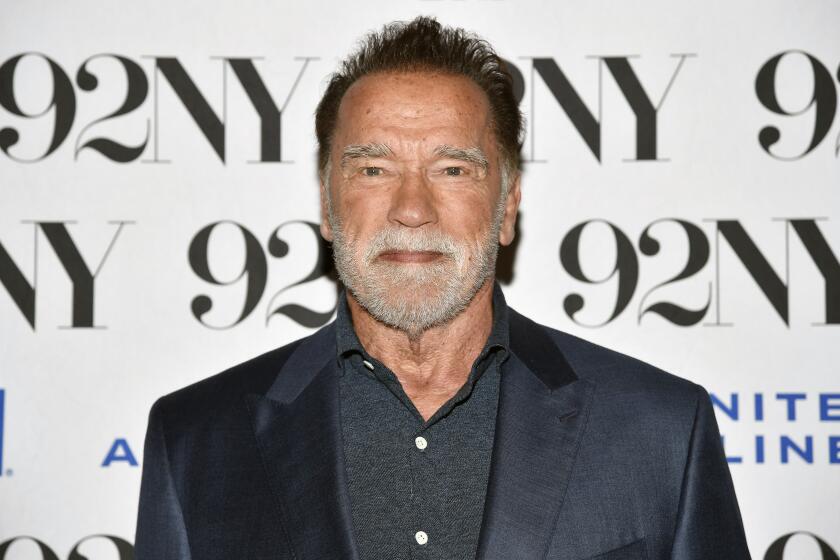
SAN DIEGO — The San Diego region’s envisioned multibillion-dollar rail expansion — complete with miles of underground tunnels and state-of-the-art train stations — could be on a collision course with a harsh political reality.
The wildly expensive plan, expected to cost roughly $160 billion, has no funding. It likely needs several voter-approved sales tax hikes that would total at least 1.5 cents on the dollar. And players from across the political spectrum have rejected what’s arguably the blueprint’s linchpin: per-mile fees on drivers, known as road charges.
Now, key local elections that could shift the balance of power at the government agency spearheading the proposal appear to have been won by Republicans who oppose new levies to fund transit.
Specifically, projected victories in Chula Vista, National City and Escondido are likely to give conservatives more power on the 21-member board of elected officials overseeing the San Diego Assn. of Governments, or SANDAG. Republicans will also retain control of seats representing Carlsbad, Vista and Oceanside.
“I’m not for a sales tax again. I think it’s a regressive tax,” said conservative John McCann, who next year is likely to replace progressive stalwart Mary Salas as the mayor of Chula Vista and its SANDAG representative. “The reality is that people are still using their cars and will be for quite a while.”

Cash up for grabs
The debate over whether to dramatically increase funding for San Diego’s long-range transportation and planning agency — which has an annual budget of roughly $1 billion — has profound implications.
If voters approve a new levy for transportation, it would put SANDAG in good standing to attract hundreds of millions of matching dollars from President Biden’s $1.2-trillion infrastructure bill. If not, such an opportunity may never come again.
Democrats are likely to retain a thin political majority on SANDAG’s board because of a weighted vote that gives elected officials from larger cities more influence. But that doesn’t guarantee that the electorate will support their ambitions to expand transit.
Labor and environmental groups couldn’t gather enough signatures this year to qualify a half-cent sales tax for the November ballot. Now they’re now setting their sights on the 2024 elections.
Their top pitch to voters: building a transit connection to San Diego International Airport and relocating the rail tracks off the crumbling Del Mar bluffs. The money would also kick-start a proposed 200-mile commuter rail system stretching from the U.S.-Mexico border to downtown San Diego, El Cajon and Oceanside.
“Our coalition is still committed to that,” said Gretchen Newsom, political director of the International Brotherhood of Electrical Workers, Local 569. “We’ve retained the bulk of our campaign funds and are ready to go.”

SANDAG officials have said the agency is grappling with a cash crunch, as its only sales tax, Transnet, is expected to bring in just a fraction of the $39 billion initially projected through 2048, when it’s set to expire.
The region’s long-range transportation agency has stayed busy over the last year, completing the Mid-Coast Trolley extension, signing a binational agreement with Mexico over the Otay Mesa East border crossing and securing funding to start the paperwork on moving the tracks in Del Mar.
However, officials have said they don’t have enough cash for new large-capital projects, such as building the train stations and rail lines envisioned in SANDAG’s most recently drafted regional transportation plan.
San Diego’s identity crisis
New tax money could effectively greenlight the transformation of huge swaths of the county by 2050 — something conservatives are deeply skeptical about.
Republicans and many affluent homeowners have spent the last decade fending off state and local efforts to transform sprawling car-dependent neighborhoods into dense, urban enclaves bustling with street life. Many residents enjoy the privacy afforded by single-family housing and have expressed little desire to hop on a train that could put them in close quarters with the region’s booming homeless population.
Meanwhile, Democrats and developers have argued that adding apartment buildings near job centers is the best way to address the state’s ruthless cost of housing. They argue that such construction is inevitable and will need to be serviced — as well as encouraged — by rail lines in order to avoid the type of mind-numbing traffic that has engulfed Los Angeles, Dallas and other mega-regions that spent decades widening freeways.
SANDAG Executive Director Hasan Ikhrata, who was hired in late 2018, is among the most strident believers in such urbanizing. However, he said he’s not interested in staying in San Diego if elected officials can’t rally around a common vision for expanding transit.
“I want to make sure the board, regardless if they’re Republican or Democrat, doesn’t spend every single meeting asking for me to be fired or fighting with each other,” he recently told the San Diego Union-Tribune. “I want to see civility and feel that we’re making a difference.”
While partisan grandstanding often consumes SANDAG’s board, much of the squabbling can be traced back to Ikhrata’s own audacious politics. He has not only frozen a handful of long-promised freeway projects but has explicitly made limiting car travel the centerpiece of his 4-year-old campaign.

As former head of the Southern California Assn. of Governments, the Jordan-born transit expert has spent his tenure in San Diego stumping not only for a massive rail expansion but for per-mile fees on drivers and fluctuating highway tolls to discourage rush-hour gridlock.
“If you want the transportation system to work for the people, whether you drive or take the bus or walk or bike, you have to price the system right,” he said.
That position — while widely embraced by academics and transportation experts around the globe — hasn’t won Ikhrata many friends in San Diego. In fact, the call for road charges has put him at odds with not only conservatives but with local Democrats who fear political blowback from the controversial idea.
San Diego Mayor Todd Gloria, arguably the most influential member of SANDAG’s board, has repeatedly called for and voted to remove per-mile fees from the agency’s transportation plan. Ikhrata said he’s waiting for the state to sign off on such a revision before redrafting his blueprint.
Gloria declined interview requests for this story.
While self-proclaimed progressive politicians have distanced themselves from road charges, it’s not clear what role the proposal played in recent local elections.
Republicans who campaigned against the notion of charging drivers a per-mile fee and won include incoming Carlsbad Councilmember Melanie Burkholder, county Supervisor Jim Desmond and McCann of Chula Vista. But many lost, such as La Mesa mayoral candidate Kristine Alessio, who was running for mayor of La Mesa, and Amy Reichert, running for supervisor.
At the same time, Democrat and Encinitas Mayor Catherine Blakespear, who has rejected per-mile fees, secured a seat in the state Senate.
Regardless of its political impact, the issue has been widely seen as red meat for the Republican base. Although, the same could be said for nearly any proposed fee increase.
“The mileage tax is something that the left-wing politicians have wanted for years, and they still want it secretly,” said Carl DeMaio, a conservative talk radio host and political activist. “I think there is no choice but to fire Hasan Ikhrata. Given the change in leadership at SANDAG, we’re pulling together an effort to seek his removal for incompetence and dereliction of duty.”

Shifting car culture
Outside of San Diego, the idea of charging drivers for every mile traveled appears to be picking up steam.
Last year’s federal infrastructure law quietly directed the Transportation Department to test the idea, while Oregon, Utah and Virginia have programs in various stages of development.
California has a pilot program aimed at ironing out some of the big questions, such as how to track drivers and whether to continue charging vehicles that cross state lines. The state has considered using everything from transponders to routine odometer readings to monitor its roughly 26 million registered vehicles.
The idea is to replace fuel taxes as more people drive electric and highly fuel-efficient cars. Government coffers dedicated to road maintenance have been dwindling across the nation in recent years, and a sense of urgency has set in, according to experts.
“It’s an issue we have a lot of bipartisan support for in Washington,” said Barb Rohde, executive director of the national nonprofit Mileage-Based User Fee Alliance, which represents local governments and municipal planning organizations.
Still, SANDAG is unique in how far in front of the issue it has gotten. An earlier draft of its $160-billion long-range plan called for collecting road charges as early as 2025, but planners decided to push that to 2030 to align with an expected launch date for the state’s mileage tax.
Many regional governments are exploring ways to piggyback on the state’s eventual rollout, but none have been as explicit as in San Diego, said Michael Manville, a professor of urban planning at UCLA’s Luskin School of Public Affairs.
“SANDAG made it much more real and concrete for voters than any discussion thus far has done in California,” he said. “Building a road-charge program, full stop, into a transportation package — it’s pretty ambitious.”
One reason for that ambition is a good-faith effort by Ikhrata to meet state-mandated benchmarks for curbing greenhouse emissions from passenger vehicles. California’s transportation sector remains a large part of its carbon footprint — nearly 40%.
Regional governments are having a hard time getting people to drive less. Experts have said for decades that the best, perhaps only, tool to keep people out of cars is dynamic tolling that increases during peak travel times.
“If you design the road-user charge correctly, some of the biggest beneficiaries will be drivers,” said Manville. “It will actually make the experience of driving in rush hour much better in ways that public transportation or expanding the freeway won’t.”
More to Read
Sign up for Essential California
The most important California stories and recommendations in your inbox every morning.
You may occasionally receive promotional content from the Los Angeles Times.











